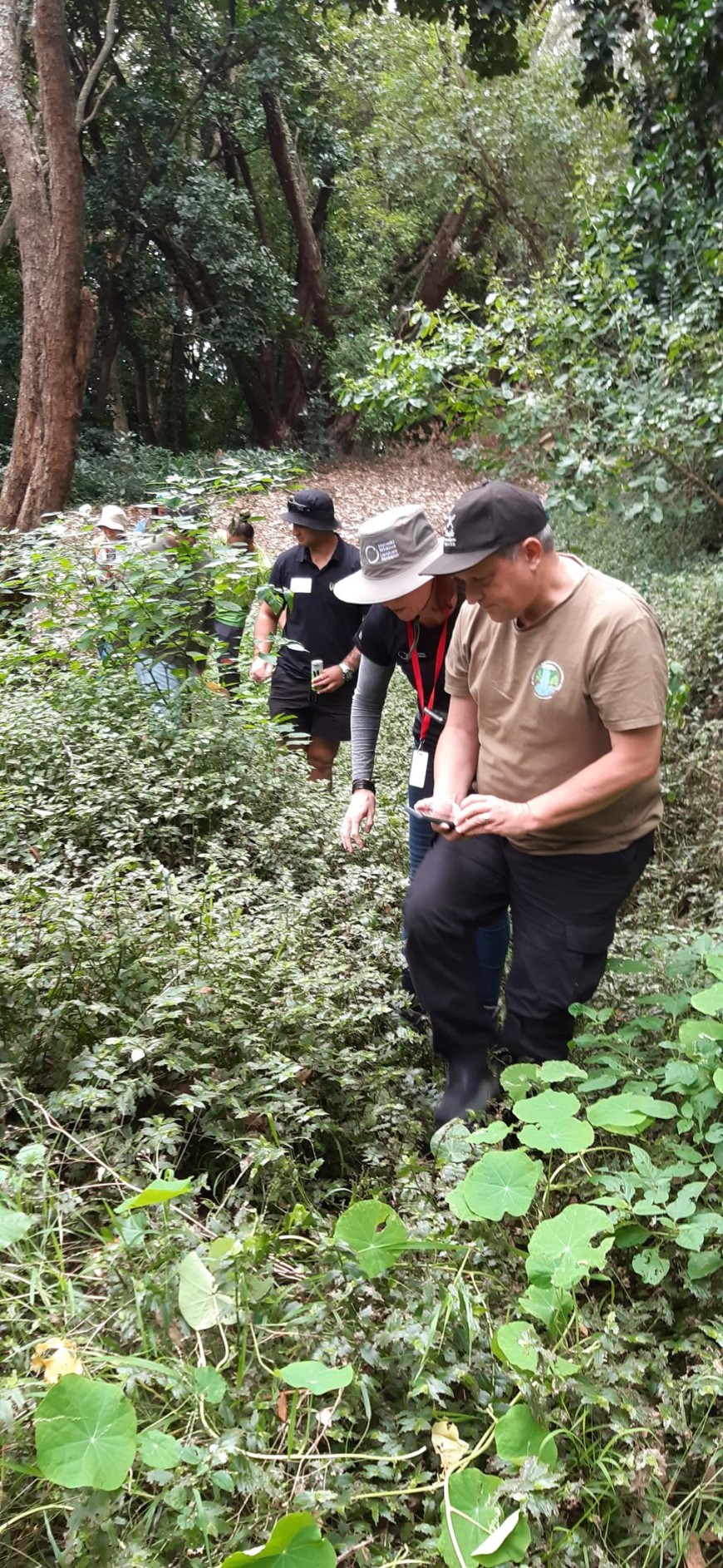Biocontrol Training for Kaitiaki
The weed biocontrol group at MWLR, through a Technology Transfer Programme funded by the National Biocontrol Collective (NBC), runs similar workshops annually for council biosecurity staff working on weed biocontrol. However, the course for Tāmaki Makaurau / Auckland kaitiaki was an Auckland Council initiative, fully funded by their pest plants team. Auckland Council, also a member of the NBC, is seeking new ways to deepen their partnerships with Ngā Iwi Mana Whenua o Tāmaki Makaurau, recognising that each iwi is wholly autonomous, individual and unique. Initiatives include engaging with mana whenua (Māori with territorial rights over land) about weed biocontrol.

Image: tradescantia site at Mt Smart.
Currently, Māori are predominantly involved during pre-lodgement consultation on release applications to the Environmental Protection Authority to gain approval to release new biocontrol agents. This is a statutory requirement. However, engaging kaitiaki early in the process, even at the scoping stages of a project, will not only uphold our commitment to be better Treaty partners, but might also help members of the NBC and Māori in their rohe to reach common ground ahead of the formal regulatory process. Hopefully, this will also provide an opportunity in the future to engage more meaningfully with mana whenua about the proposed release of new organisms into New Zealand and the associated potential risks, costs, and benefits.
The 2-day workshop covered the mandatory six steps in weed biocontrol projects in New Zealand:
- establishing feasibility
- conducting New Zealand surveys
- finding agents, and host specificity testing
- gaining permission to import and release
- mass rearing and release
- monitoring and assessment.
Also included were sections on the theory of weed biocontrol and examples of successful weed biocontrol programmes in New Zealand.
The workshop participants visited the Beever Plant Pathogen Containment Facility and associated mass-rearing glasshouses, the New Zealand Arthropod Collection (Ko te Aitanga Pepeke o Aotearoa), the New Zealand Fungarium (Te Kohinga Hekeheka o Aotearoa), and two urban field sites in Auckland, where they were able to see weed biocontrol in action. This last visit was one of the most valuable aspects of the course, as we could clearly show evidence of host specificity in the field. The stars of the show were the tradescantia leaf beetle (Neolema ogloblini), the tradescantia yellow leaf spot fungus (Kordyana brasiliensis), and the alligator weed flea beetle (Agasicles hygrophila).
Image: workshop trainers and participants.
The feedback we received from the workshop participants was overwhelmingly positive. This success was a team effort, with assistance from other members of the MWLR weed biocontrol group, Auckland Council staff, the collections managers, and, of course, the participants themselves, who were actively engaged and interested in learning about weed biocontrol and providing feedback to help improve our engagement with mana whenua in the future.
This project was funded by Auckland Council.

